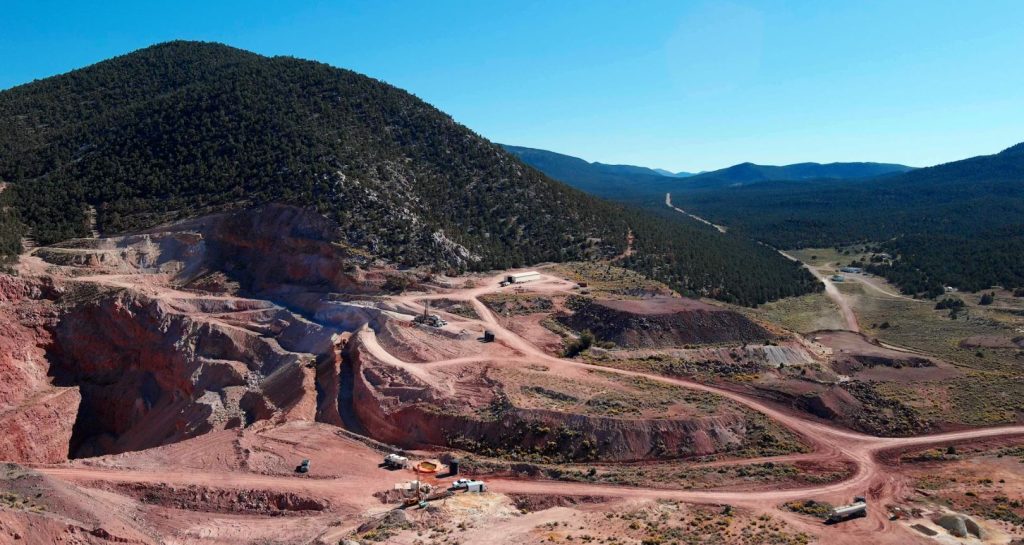Nevada King Gold drills 1.74 g/t gold over 114.3 metres at Atlanta mine, Nevada

Nevada King Gold Corp. [NKG-TSXV; NKGFF-OTCQX] reported assay results from 11 vertical and angle reverse circulation (RC) holes recently completed at its Atlanta gold mine project, located 264 km northeast of Las Vegas, Nevada, in the prolific Battle Mountain trend. Holes released today were sited to tie the mineralization at the north end of the historical pit together with mineralization hosted in the West Atlanta graben (WAG) farther to the west and are plotted on a newly released Section 22-14N.
Highlights: An interval of 1.74 g/t gold over 114.3 metres in drill hole AT23WS-34 is a 14-metre step-out from historical hole DHRI-15-LRC1, which cut 1.66 g/t gold over 102.1 metres and bottomed in mineralization, thus extending mineralization 12 metres deeper while also confirming the gold/silver grades reported in DHRI-15-LRC1.
AT22WS-6 returned 111.3 metres of 0.56 g/t gold and 83 g/t silver. AT22WS7 returned 94.5 metres of 0.59 g/t gold and 10.1 g/t silver.
An interval of 1.09 g/t gold over 61 metres in AT23NS-105 is an 8-metre step-out from historical hole DHRI-11-MRC4 (3.27 g/t Au over 22.9 m), which bottomed in mineralization. Nevada King now knows mineralization within this fault block is around 60 metres thick, and the company is planning an additional hole to be drilled on the east side of DHRI-11-MRC4 to see if grade increases moving toward the nearby fault.
Of the three holes drilled along the West Atlanta fault No. 1 (WAF1), AT22WS-11 showed the best result, averaging 1.05 g/t gold over 89.9 metres, while adjacent holes AT22WS-6 and AT22WS-7 intercepted 0.56 g/t gold over 111.3 metres and 0.59 g/t gold over 94.5 metres, respectively. Historical core hole DHRI-11-7C, located 19 m east of WS-7, reported 90.2 metres at 0.97 g/t gold, demonstrating consistency in thickness and grade all across this 50-metre wide fault block to DHRI-15-LRC1 on the east side.
Drilled between the West Atlanta fault (WAF) and the WAF1, AT23WS-10A picked up 29 metres grading 0.685 g/t gold, indicating the presence of mineralization that needs to be further defined with additional drilling to the east and west where the bounding faults may provide higher grades.
Calvin Herron, exploration manager, commented: “Our holes reported along Section 22-14N repeat the same pattern of mineralization seen 30 metres northward along Section 22-15N. Gold values and thicknesses along the Atlanta mine fault zone between the East Atlanta and WAF are decreasing northward from the pit, while at the same time values and thicknesses west of the WAF within the WAG are increasing. We are, therefore, currently pushing our drilling along Section 22-14N westward to the West Atlanta fault No. 2 and beyond into areas devoid of historical drilling in an effort to find new faults that may have pumped higher-grade mineralization into what is turning out to be a very large, gold/silver, blanket-like, mineralized horizon.”
Nevada King is the third-largest mineral claim holder in Nevada, behind Nevada Gold Mines (Barrick/Newmont) and Kinross Gold. Starting in 2016, the company staked large project areas hosting significant historical exploration work along the Battle Mountain trend located close to currently producing or past-producing gold mines.
These project areas were initially targeted based on their potential for hosting multimillion-ounce gold deposits and were subsequently staked following a detailed geological evaluation. District-scale projects in Nevada King’s portfolio include: the 100%-owned Atlanta mine, located 100 km southeast of Ely; the Lewis and Horse Mountain-Mill Creek projects, both located between Nevada Gold Mines’ large Phoenix and Pipeline mines; and the Iron Point project, located 35 km east of Winnemucca, Nevada.
The company is well financed with cash of approximately $17-million as of August, 2023.
